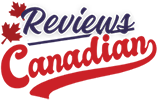-
5 Data Signals That Tell Revenue Managers when to Raise Hotel Rates – Image Credit Lighthouse
Revenue managers face a daily dilemma: when exactly is the right moment to increase rates?
In today’s rapidly shifting market, pricing decisions backed by solid data aren’t just helpful—they’re essential for maximizing revenue.
Make no mistake – raising and lowering rate is only one tool within the revenue management tool-box, but it is often the most crucial and effective tool that we have, so when making rate changes to our Best Available Rate, or Flexible rate, it’s very important that there is a logical reason for why we are making a change.
This guide reveals five proven data signals that clearly indicate when to confidently raise your rates. These aren’t theoretical concepts, they’re practical indicators used by top-performing hotels to capture maximum value without sacrificing occupancy.
1. Positive room night pickup
Many revenue managers start their day by heading straight to their pickup report. Pickup provides one of the most straightforward indicators. After all, if a guest is booking the room, they found that price-point acceptable.
Strong room night pickup is a telltale sign that it’s time to raise rate for a given stay-date, although not all pickup is created equal, as we’ll discuss later.
Take a look below at an upcoming stay-date, shown in Lighthouse Business Intelligence. Note that this hotel is experiencing strong 7-day pickup for a date a few weeks in the future (Wednesday the 26th).
While pickup alone doesn’t tell the complete story, let’s add context: this hotel typically sees strong corporate midweek demand and already has group business on the books
The pickup shown in the “Pickup from” column (63 room nights) represents more than 20% of total capacity, and considering the hotel is undergoing a partial renovation and has a fair amount of rooms out of service, there are now only 59 rooms left to sell!
This date clearly demonstrates how pickup, when analyzed alongside supply constraints, sends an unmistakable signal: push rate!

2. When year-over-year pace shows demand strength
Positive pace is powerful when combined with pickup, but even on its own, strong pace performance often indicates additional opportunities for raising rates.
In this context, we’ll talk about pace in terms of year-over-year pace. To brush a bit more on this term before reading on, read our Hotel revenue management glossary, or watch the Revenue management term of the week.
Below, you’ll see an interesting date shown in Lighthouse BI. The stay-date March 12th is showing strong positive pace, a positive variance of 77 room-nights, and $34 in ADR. This presents another solid signal that the hotel can push rates – the hotel is capturing more demand than it was for the same day of week last year at a higher rate!

3. When your market mix supports rate increases
Favorable market segmentation—both in existing on-the-books business and ongoing pickup—is a major factor that determines whether you have the green light to push rates.
You may have superb pickup, and above-average pace, but if it’s all predicated on a large 100-room wedding block that’s likely to cancel, you may find that raising rate isn’t viable.
The truth is that there is no perfect market mix, but like most things in life, variety is key. Having a market mix of say, 30% corporate negotiated 30% leisure transient, 20% SMERF Group, 20% Corporate Group is almost always desirable to 90% SMERF group and 10% leisure transient.
Guests from different segments tend to travel for different reasons, to illustrate: If there is a thunderstorm forecast for this weekend, which would you rather have booked: a kids soccer tournament, or corporate extended stay guests? A healthy mix of different segments booked insulates us from cancellations.
Market segmentation doesn’t just mean your existing on-the-books guests, either! Revenue managers actively monitor the segmentation of guests as they book.
When segmentation looks healthy for both booked business and new pickup, it signals you can push rates higher, as demand is coming from a variety of sources.
4. When competitor pricing and availability changes
No one wants to be the last hotel offering rock bottom rates. On the flipside, no one wants to be the only hotel priced $300 above the rest of the pack during a period of low demand – this is why it’s important to watch what your competitors are doing at all times.
Along with pickup, seeing gaps in between your price and the competitors pricing is usually one of the most obvious signals that it’s time to push. But, be cautious! There are a few checklist items you’ll want to run through before cranking your rate up to match the highest competitor.
Consider the broader context
If you have a competitive set with 10 properties, and only one is raising rates, does that warrant raising your rates? Probably not. This outlier might be following a different strategy, targeting a different segment, or simply making a pricing mistake.
But if 8 out of 10 hotels are $50 higher? That’s likely a green light to push. This pattern indicates a market-wide recognition of stronger demand or value perception. When the majority of your competitors make similar pricing moves, it typically reflects genuine market conditions rather than individual pricing strategies.
Pay particular attention to your closest competitors—those with similar location, service level, and amenities. Their pricing decisions often provide the most relevant signals for your own rate strategy.
Track your competitive rate evolution
Have your main competitors in your primary compset been pushing rate steadily for the past 30-days? If so, you’re likely in a rising market with opportunities to push your flexible rates higher.
That said, some competitors often fall prey to a boom-and-bust cycle of pushing rate too hard due to optimism, and then crashing rate last minute to fill empty rooms. By analyzing rate evolution patterns, you can avoid this herd mentality and price appropriately in the lead-up to arrival.

Room type considerations
Sometimes competitors will appear artificially high in a rate shop, and it isn’t until doing some deeper research, that the only rooms they have left to sell are an ultra-premium room type, one of only a handful in their inventory. If you use a rate shopping tool like Rate Insight, you’ll benefit from always seeing the apples-to-apples comparison of flexible rates only.
Leverage your position when inventory is scarce
Also consider availability – one of the joys of revenue management is having played your cards right, and being one of the last hotels with availability to sell in the final days leading up to a lucrative special event. If you are one of the “last men standing”, you often have carte blanche to charge a premium for your rooms.
This position of strength becomes even more valuable when you monitor market-wide availability. When your competitive set shows limited inventory, especially for specific room types, your pricing power increases substantially
5. When special events and market demand indicators show promise
Often, events and other demand indicators can be another clear signal that it’s time to increase our Best Available Rate rate. From new music festival announcements, to sporting events, and one-off special occasions, there are a wide array of events that bring temporary periods of elevated demand and in turn, prices to our hotels.
Important leading indicators to analyze include: attendance figures, historical performance from previous similar events, and even news / social media media.
Consider the hotel example below: This property is near a famous event venue that attracts big names, often for special, one-off shows and events. An upcoming show is already creating compression and looks promising – our example hotel needs to be careful though – there are indications that their existing rate strategy might be too low:

Market intelligence tools like Market Insight are looking at many variables such as OTA and GDS search volume, along with market pricing data, and event attendance data to alert us that we have a great opportunity to push rate! Notice the indication that “Your price is lower than expected”.
The hotelier can also learn a bit more about this event within Rate Insight’s Events tab. Below we can see the category, date, and attendance data. This is useful for comparing against similar events that may have occurred at this venue in the past.

And within BI, a revenue manager can spot this opportunity date by hovering over the event icon, while also seeing the elevated market demand levels and rate shop. This is a great view to utilize in weekly strategy calls, so all stakeholders can get on the same page when it comes to strategy for this upcoming concert.
Market intelligence tools like Market Insight are looking at many variables such as OTA and GDS search volume, along with market pricing data, and event attendance data to alert us that we have a great opportunity to push rate! Notice the indication that “Your price is lower than expected”. The hotelier can also learn a bit more about this event within Rate Insight’s Events tab. Below we can see the category, date, and attendance data. This is useful for comparing against similar events that may have occurred at this venue in the past.

Turn data signals into revenue opportunities
All hotels are unique; if you’re a commercial strategist or revenue manager yourself, you might even have additional signs and cues you consider when it comes to pushing your BAR rate. However, the five signals listed above are often the most glaring universal sign that there is more opportunity to push for higher rates.
The difference between good and great revenue management often comes down to recognizing these signals earlier and acting on them more decisively than your competitors. In today’s dynamic market, waiting for perfect certainty means missing valuable rate optimization windows.
Lighthouse’s commercial solutions give you the real-time visibility to spot these opportunities the moment they emerge. Don’t leave money on the table. Schedule a personalized demo today and discover how top-performing hotels are using these exact signals to drive revenue growth.
About Lighthouse
Lighthouse (formerly OTA Insight) is the leading commercial platform for the travel & hospitality industry. We transform complexity into confidence by providing actionable market insights, business intelligence, and pricing tools that maximize revenue growth. We continually innovate to deliver the best platform for hospitality professionals to price more effectively, measure performance more efficiently, and understand the market in new ways.
Trusted by over 65,000 hotels in 185 countries, Lighthouse is the only solution that provides real-time hotel and short-term rental data in a single platform. We strive to deliver the best possible experience with unmatched customer service. We consider our clients as true partners – their success is our success.
This article originally appeared on Lighthouse.



![1st Apr: Mending the Line (2022), 2hr 2m [R] (6.35/10)](https://occ-0-6594-999.1.nflxso.net/dnm/api/v6/Qs00mKCpRvrkl3HZAN5KwEL1kpE/AAAABVGFNsRILnM1tgHVdKk7IMdMzZHoEEqiN2rZwbx2DUqGMb27xj4y49V74q3jJZN2uqfNtnyrhEmIKZPQm01p3l81j8sByMqhk8DPDgwnvpQKEXxf1AHnPRzndpWCFKezefj7VVIJO9jQkvf7UPo4bL2diYGVxoQ2-B_fIPkGpXpunA.jpg?r=182)













